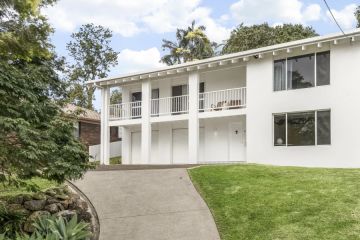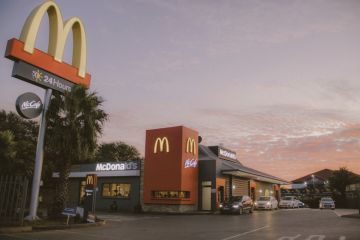Welcome to the future: The home-appliance revolution taking over the country

Those who watched the last season of The Block will be well aware of the high-tech appliances boom sweeping the Australian market. From voice-automated taps to $26,000 refrigerators, we saw these appliances take centre stage in many of the contestants’ rooms, serving as much a piece of art as they do a functional item.
With so many brands and features on offer at various prices, researching the white-goods market can be overwhelming. Australian consumers are a cautious bunch unlikely to jump on the latest appliance gimmick unless it demonstrates a genuine improvement to their life.
In the past decade, major household appliances in the average Australian home have evolved in many ways, particularly in energy efficiency.
“Australia is one of the world’s leaders in driving energy efficiency and water-consumption reductions,” says E&S managing director Rob Sinclair. “Products must achieve super-low energy consumption standards and, in the case of refrigeration and airconditioners, the use of the most efficient and environmentally friendly gases is imperative.”
There has also been a shift in appliances’ flexibility and ease of use. Self-cleaning ovens, dishwashers with easy-to-move shelves and induction cooktops have all entered the mainstream.
Sinclair says customers generally look to fulfil four wishes when shopping for an appliance: the ability to make their life easier, save time, be energy efficient and be safe.
Heat-pump technology that regulates washing-machine water temperature is among the new features that meet this criteria.
“In the case of appliances in the laundry, we see Bosch, Siemens, Miele, Asko, V-Zug and AEG using super-efficient heat-pump technology to significantly reduce the running cost of dryers in our laundries,” Sinclair says.
- Related: The concrete home that pushes the limits of design
- Related: Maximalism is back
- Related: The hotel paying tribute to the art deco era
This technology has more recently made its way into dishwashers from Swiss brand V-Zug, which Sinclair says makes them the most energy efficient dishwashers in the world.
Auto-dose technology is another impressive washing machine and dishwasher feature. It enables up to 1.6 litres of laundry detergent to be automatically drawn as needed by an appliance’s wash cycle. This was first introduced about 10 years ago internationally and made its way to Australia 18 months later, but only recently have makers incorporated it into locally available products.
“After the initial introduction by Siemens, brands like Bosch, Miele and Asko are releasing this technology, providing competition which now sees 20-40 per cent savings,” Sinclair says.
Refrigerators have now become sleeker and more refined to better fit with interior design. The Fisher & Paykel integrated range can be customised to a consumer’s kitchen cabinetry and neatly slide into place.
“Australians are spending more on appliances, not for the sake of convenience, but certainly for that ultimate entertaining/status piece,” says Winning Appliances senior category manager Jordan Rogers.
“These products really lift the style of your kitchen for that seamless look and appearance we all love.”
The internal features of these refrigerators are more advanced. For example, Beko has recently launched the Active Fresh Blue Light refrigerator in Australia. This keeps food fresh up to three times longer.
Another similar appliance is the LG InstaView Door-in-Door refrigerator. With two quick knocks, this fridge door turns transparent to reveal its contents and stop cold air being lost by opening the door.
Cooking appliances are also showing more niche features as consumers embrace cooking as a hobby rather than chore.
KitchenAid’s Chef Touch – a complete sous-vide cooking system for the home – is an example. This three-in-one system includes a vacuum machine for preserving food using the sous-vide technique, a steam oven and a shock freezer for rapid chilling and freezing.
In the coming years, consumers can expect the smart-home appliance sector to move from obscurity to the forefront of the white-goods industry.
“In regards to the white-goods market at the moment, there is a lot of noise around the smart home and there is a divide in consumers who are excited by this technology and what it could mean, and those who are warier,” says Brad Reed, senior marketing manager of home appliances at LG Australia.
“For example, voice-assistant technology was developed a couple of years ago, but it is only now that you see it in homes as people are getting used to having software embedded into their appliances,” Reed says.
At the moment, this market is still in its infancy, as shown at the September IFA fair – the world’s leading trade show for consumer electronics and home appliances in Berlin – where Sinclair says most major appliance companies show off their first attempts at using smart-home technology and compatible appliances.
Sinclair says the next step will be the introduction of proactive customer service to better support smart-appliance use. The technology is here, but it’s up to the tech and white-goods companies to ensure smart-home appliances can enrich consumers’ lives.
We recommend
We thought you might like
States
Capital Cities
Capital Cities - Rentals
Popular Areas
Allhomes
More
- © 2025, CoStar Group Inc.







